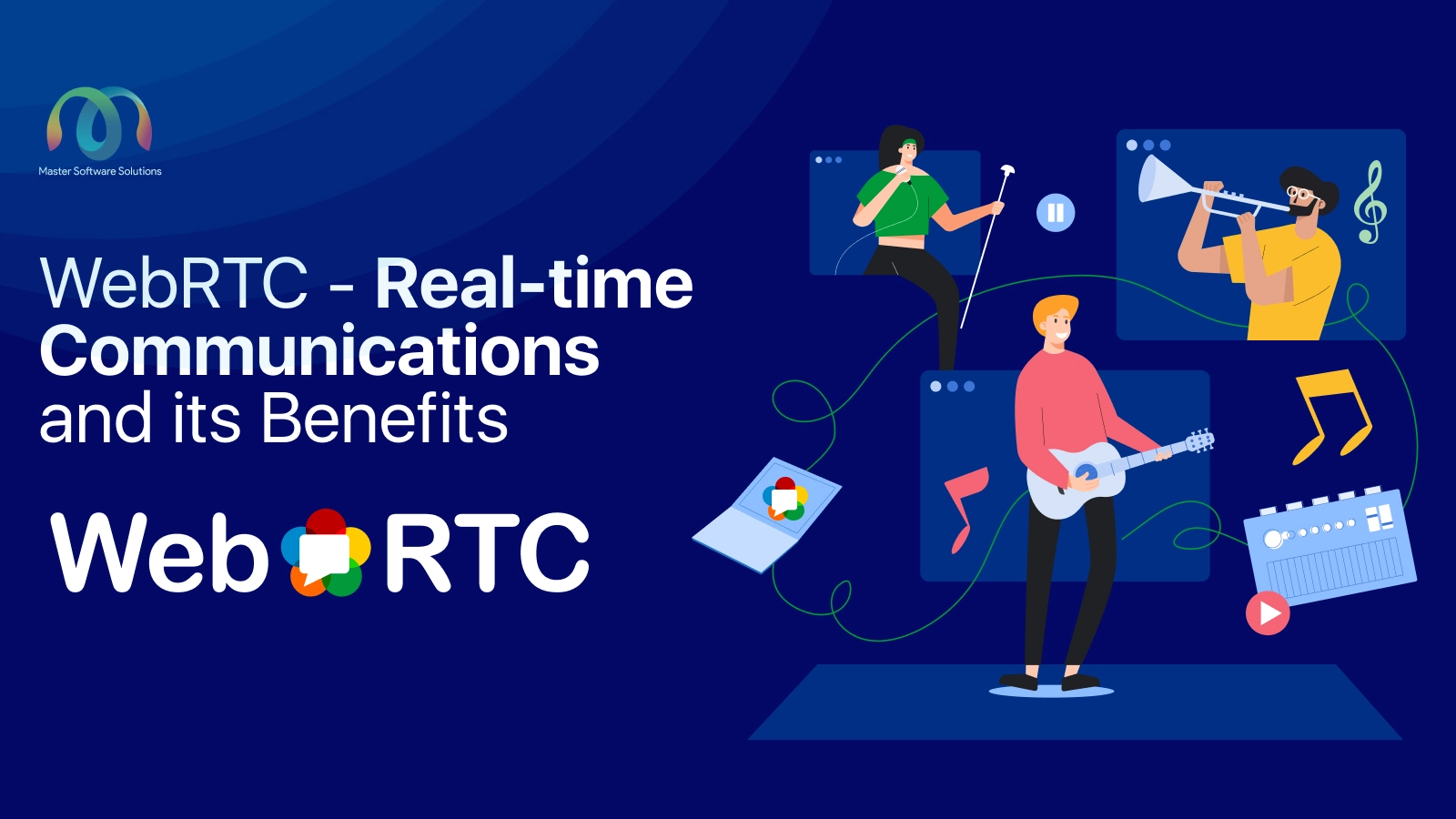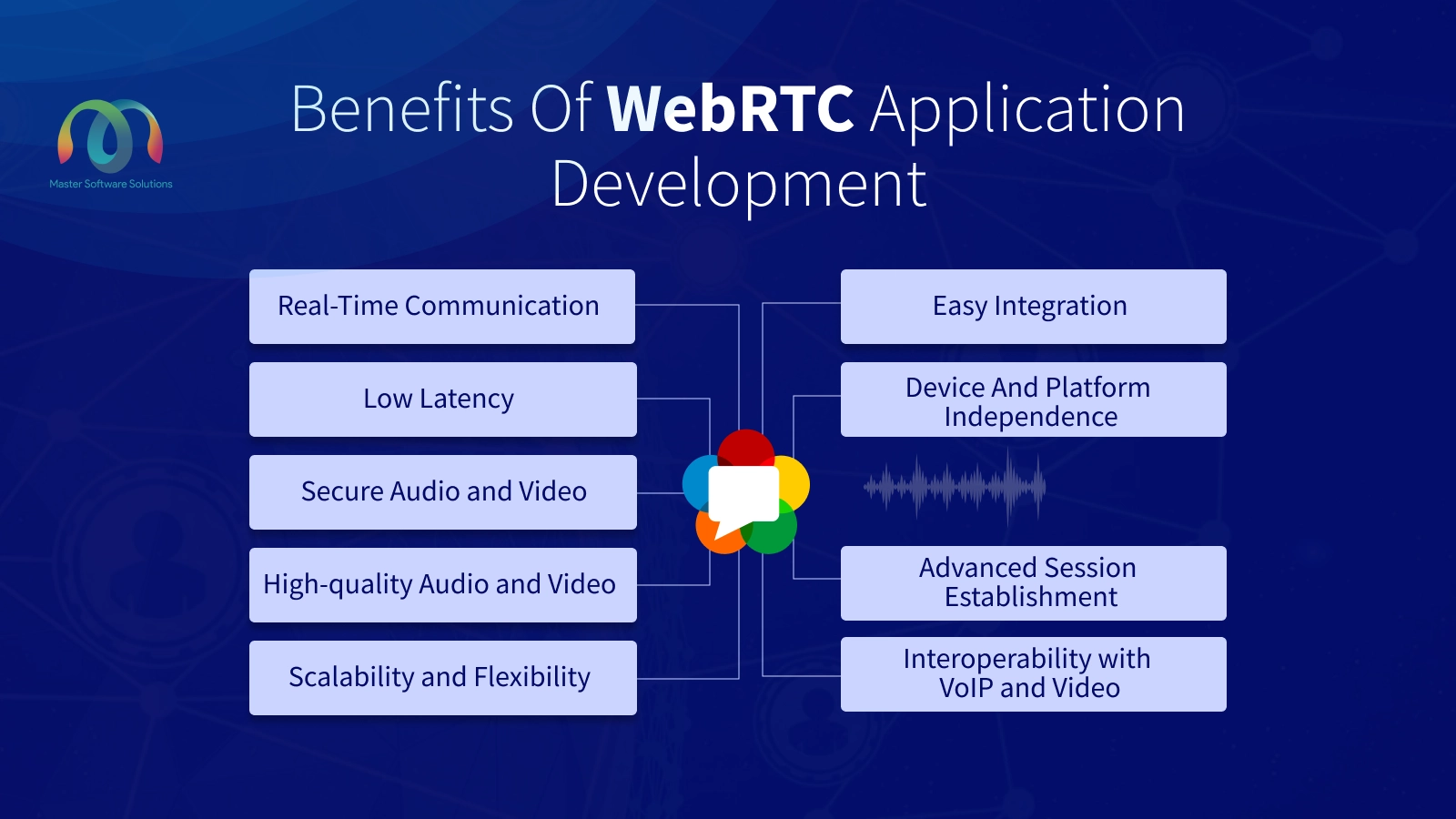WebRTC – Real-time Communications and its Benefits

The demand for real-time and seamless interactions has become paramount in this fast-evolving technological landscape. WebRTC – Web Real-time Communication is a revolutionary framework that empowers web applications with real-time audio, video, and data transfer with the lowest latency without plugins or software.
With the increasing dependency on digitalisation, understanding WebRTC and its benefits is essential. The blog will uncover the advantages of using WebRTC application development and show how it can help your business.
What are the advantages of WebRTC (Web Real-Time Communication)?
WebRTC app development is a transformative technology driving the evolution of online communication and collaboration with its extensive feature set. It includes an array of advantages like real-time communication, low latency, security, high-quality audio and video, scalability, flexibility, ease of integration, device independence, advanced session establishment, interoperability, and rapid development capabilities.
Some of the benefits of WebRTC application development
1. Real-time communication
- WebRTC enables instantaneous user interactions by facilitating real-time communication directly within web browsers.
- Unlike traditional APIs, WebRTC is built into web browsers and requires the installation of plugins or standalone apps; this ensures seamless communication without additional setup or downloads.
- Instantaneous feedback and interaction are crucial for applications like online gaming, live streaming, video conferencing, customer support chats, and collaborative document editing. These apps require real-time functionality.
2. Low latency
- The time interval between sending and receiving data packets during communication is called latency. Reduced latency ensures quick audio, video, and data transfers with WebRTC.
- Applications like online gaming, live auctions, interactive webinars, and video conferencing where responsiveness in real-time is critical and low latency is essential.
- WebRTC makes interactions feel more seamless and natural by cutting down on latency, which improves communication experiences.
3. Secure audio and video
- WebRTC prioritises security, employing encryption techniques to guard against unauthorized access and interception of audio and video streams.
- It utilises Secure Real-time Transport Protocol (SRTP) for encrypting media streams and Datagram Transport Layer Security (DTLS) for negotiation, ensuring the confidentiality and integrity of communications.
- Applications involving sensitive data, like legal discussions, financial transactions, healthcare consultations, or private business meetings, require this security feature.
Read More: WebRTC- The Developing Web Technology You Should Know About
4. High-quality audio and video
- Advanced audio and video codecs like VP8/VP9 for video and Opus for audio provide high-quality multimedia experiences.
- Adaptive bitrate algorithms ensure optimal performance even in environments with variable bandwidth by dynamically adjusting the quality of audio and video streams based on network conditions.
- Adaptive algorithms guarantee immersive, crisp, and clear communication experiences, which increase user satisfaction and engagement.
5. Scalability and flexibility
- The decentralised peer-to-peer architecture of WebRTC facilitates smooth scalability, accommodating different numbers of participants in communication sessions.
- It provides deployment flexibility by supporting decentralised (peer-to-peer) and centralised (server-based) network topologies to meet the needs of various applications.
- WebRTC is highly flexible and scalable, making it a better choice for live-streaming events, large-scale video conferences, and one-on-one conversations due to its scalability and flexibility.
6. Easy integration
- To streamline integration with web and mobile applications and cut down on development time and effort, WebRTC offers extensive APIs and libraries.
- To easily add real-time communication features, developers can use frameworks like WebRTC JavaScript APIs, WebRTC native APIs for iOS and Android, and third-party libraries.
- This integration’s simplicity speeds up the creation of communication-enabled apps, enabling companies to bring cutting-edge solutions to market.
7. Device and platform independence
- Because WebRTC is compatible with a wide range of operating systems and devices, users can communicate regardless of their device.
- Users can engage in WebRTC-powered interactions with consistent quality and performance, whether accessing from desktop computers, laptops, smartphones, or tablets.
- WebRTC-enabled applications are adopted widely due to their improved accessibility and user reach.
8. Advanced session establishment
- WebRTC uses protocols such as ICE (Interactive Connectivity Establishment) and STUN (Session Traversal Utilities for NAT) for efficient communication.
- WebRTC can now pass through firewalls and NAT (Network Address Translation) thanks to ICE, which guarantees peer connectivity at its best.
- Advanced session establishment guarantees a strong and dependable session, even in intricate network settings with constrictive NAT or firewall configurations.
Read More: WebRTC Application Development Service For Remote Collaboration
9. Interoperability with VoIP and video
- WebRTC capabilities in an organisation’s communication infrastructure allow smooth transitions and interoperability with existing VoIP and video conferencing systems.
- It enhances compatibility across platforms and devices and facilitates interoperability with legacy communication systems by supporting standards like H.323 and SIP (Session Initiation Protocol).
- Because of this interoperability, users can easily communicate across various networks and communication technologies, ensuring a seamless user experience.
Developing a WebRTC application
You can opt for WebRTC development services to leverage WebRTC APIs, SDKs, and developer tools, to streamline and create feature-rich apps. By using pre-built components, libraries, and open-source projects, developers can shorten time to market by implementing real-time communication features more quickly. This adaptability fosters innovation and allows them to promptly respond to customer demands, keeping them one step ahead of competitors in the rapidly evolving digital market.
WebRTC is a free API; however, it requires extensive technical skills for development. If you are looking forward to developing your customised WebRTC application, book a free consultation to discuss your requirements and see how we can help you.
